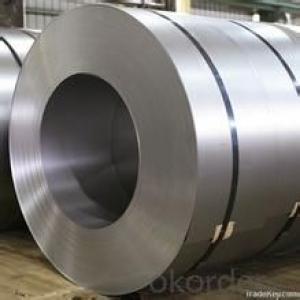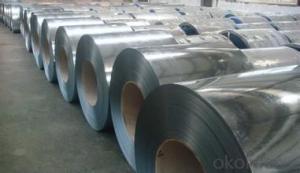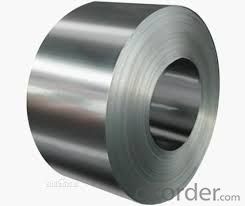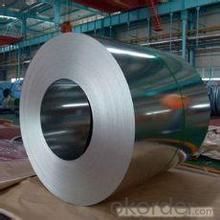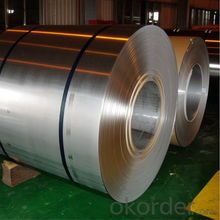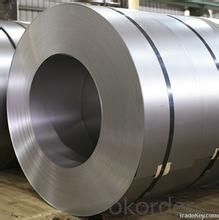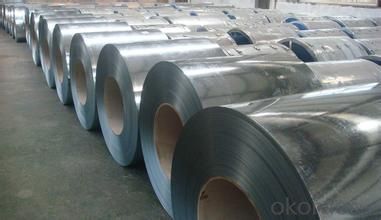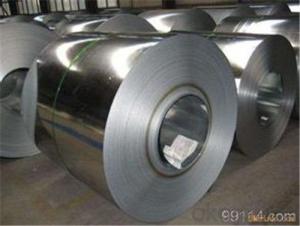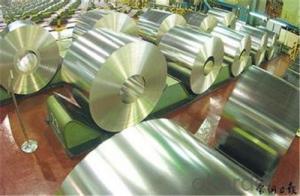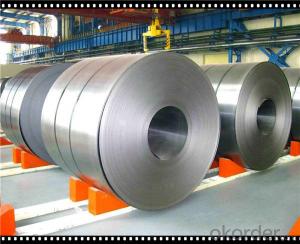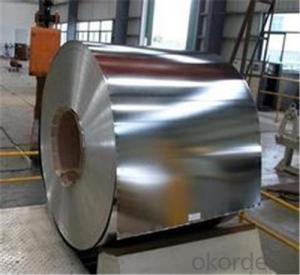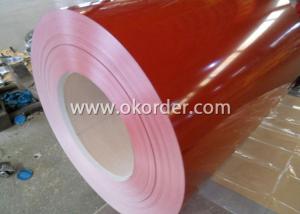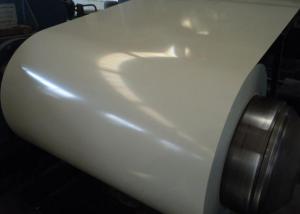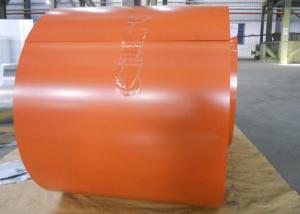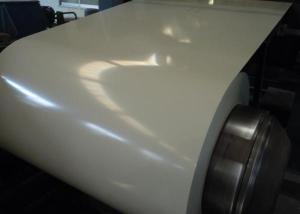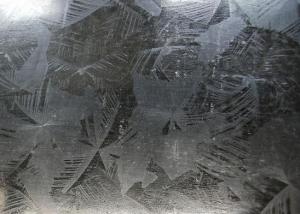Cold Relled Steel Coil/Plates with High Quality in CNBM
- Loading Port:
- Tianjin
- Payment Terms:
- TT OR LC
- Min Order Qty:
- 100 m.t.
- Supply Capability:
- 89000000 m.t./month
OKorder Service Pledge
OKorder Financial Service
You Might Also Like
Description of cold rolled steel coil :
The raw material of cold rolled steel coil/sheet is high quality hot rolled product, and after pickling, kinds of new technology and new process of global cold rolling production have been applied. Therefore the manufacturing, home appliance, automobile etc.
Specification of cold rolled steel coil :
standard | AISI, ASTM, DIN, GB, JIS |
Steel Grade | Q195/Q195L/st12/dc01/spcc |
Thickness | 0.15-1.5mm |
Width | 500-914mm |
Length | coil |
Place of Origin | Shandong,china(mainland) |
Producing ablity | 500,000 Tons/month |
Type of payment | T/T, L/C |
Packing | As per customer's requirement |
Delivery | 30days after contract |
Price | FOB&CIF |
MOQ | 20Tons |
Packaging & delivery of cold rolled steel coil :
Packaging Detail: | Oil coated, metal shell and anti-rust paper with corner protected by sheet or coil |
Delivery Detail: | 30 days after receiving deposit or L/C |
Application of cold rolled steel coil :
1. Refrigerators, cabinets, power distribution baords and drums.
2. Automobile floor and roof panels.
3. Automobile fenders and quarter panels
4. Automobile fenders and quarter panels
Images of cold rolled steel cold rolled steel coil:
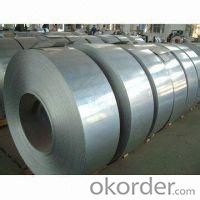
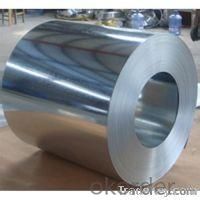
- Q: Why is iron used to create steel? Why not other elements?
- iron came before steel. iron is what was discovered that, under certain circumstances, became a stronger metal: steel. that is why. its like asking why copper is in bronze. because what we call bronze, is an alloy of copper and tin. if you give a more detailed question, i may be able to give a more detailed answer.
- Q: How are steel coils protected against scratches and damage?
- To protect steel coils from scratches and damage, various methods are utilized. One widely used approach involves applying a protective coating or film to the surface of the coils. This coating acts as a barrier, preventing direct contact between the steel and potential sources of harm. It may consist of materials like polyethylene, PVC, or other abrasion and impact-resistant plastics. Moreover, steel coils are frequently wrapped or packaged using materials such as paper, cardboard, or plastic. This wrapping provides an additional layer of defense during storage, transportation, and handling. The wrapping material acts as a cushion, absorbing any potential impacts or friction that could cause scratches. Furthermore, special containers or pallets with protective features are employed to minimize the risk of damage to steel coils. These containers or pallets may have padded interiors, secure fastenings, or dividers that keep the coils in place and prevent them from rubbing against each other. In certain situations, steel coils are stored or transported in controlled environments to minimize damage. This may involve temperature-controlled warehouses or shipping containers that prevent the formation of moisture, which can lead to corrosion or other types of harm. Overall, a combination of protective coatings, wrapping materials, specialized containers, and controlled environments is utilized to ensure the adequate protection of steel coils against scratches and damage throughout their lifecycle.
- Q: I work in a steel foundry 10-12 hours a day where we melt and pour stainless steel tubes. The pour temperature for some of them is very close to the boiling point of stainless steel (about 3800 degrees) because it has to be VERY liquid for the application we use it. Anyway, it does boil a little and we breath in the vapours which I can assure you ARE indeed vapourized stainless steel (it collects and cools on everything and makes a nice shiny coating). Ok, so to the question, does breathing vapourized stainless steel all day pose a health risk such as cancer? Anyone know? I'm just curious.
- I would imagine it's not good. I doubt cancer but I suppose it may be possible. Shouldn't you guys have respirator gear on? Where's OSHA when you need'em? ;)
- Q: So finally got around to watching man of steelnow i heard a few times that batman was in iti didn't se him.in the film is it something subtle I've just missed or is he not in it?when i googled it got loads of results for them being together in the new film but nothing about man of steel 2013
- No, however he will make an appearance in Batman V Superman: Dawn of Justice out next year.
- Q: Are steel pokemon weak against any attacks? If so, what types? (like water, grass, etc.)
- Steel Defensive Strengths: Nearly everything (Only Fire, Ground, and Fighting attacks will put a dent in Steel-types, and Water and Electric do standard damage.) Everything else is wasted effort, especially Poison. (For the whole list, it's Normal, Grass, Ice, Flying, Psychic, Bug, Rock, Ghost, Dragon, Dark, and Steel) Weaknesses: Fire, Fighting, Ground Immune to: Poison Offensive Advantages: Ice, Rock Disadvantages: Water, Fire, Electric, Steel Immunities: None basically fire, fighting and ground
- Q: Alright, First off i have an old plywood military box with galvanised steel corners, hinges etc (any part that must be strong) and its rusting! Some of the pieces have discoloration (like an oil stain on them) and other parts are full of this metallic dust. 1) Should i remove this box from my room?2) Is there any way or should i remove the powder on the part?3) Does this pose a serious health hazard?4) What are the oil stains?
- Wipe the powder of and the rest should be safe, unless you stub your toe on the rusty metal.
- Q: What are the dimensions of steel coils used in the aerospace industry?
- The dimensions of steel coils used in the aerospace industry can vary depending on the specific application and requirements. However, generally speaking, aerospace-grade steel coils tend to have standardized dimensions to ensure compatibility and ease of use. Typically, the thickness of steel coils used in the aerospace industry ranges from 0.008 inches (0.2 mm) to 0.125 inches (3.2 mm). The width can vary from around 0.5 inches (12.7 mm) to 72 inches (1829 mm), although narrower widths are more common. The length of the coil can range from several hundred feet to thousands of feet, depending on the needs of the specific aerospace manufacturer. It's important to note that these dimensions are not fixed and can be customized based on the requirements of the aircraft or aerospace component being manufactured. The dimensions of steel coils may also differ depending on the specific steel alloy being used and the manufacturing processes involved. Ultimately, the dimensions of steel coils in the aerospace industry are determined by factors such as strength, weight, durability, and the specific needs of the aerospace manufacturer or project.
- Q: How does the steel coil market vary regionally?
- The steel coil market varies regionally due to several factors such as the level of industrialization, economic development, and the specific demands and requirements of each region. In developed regions such as North America and Europe, the steel coil market is relatively mature and highly competitive. These regions have well-established manufacturing industries and infrastructure, which create a strong demand for steel coils for various applications such as automotive, construction, and machinery. The market in these regions is driven by factors like technological advancements, product innovation, and the need for high-quality materials. On the other hand, developing regions such as Asia-Pacific, Latin America, and Middle East & Africa experience rapid industrialization and urbanization, driving the demand for steel coils. These regions have growing construction sectors, booming automotive industries, and increasing infrastructure projects, which contribute to the rising demand for steel coils. Additionally, the availability of low-cost labor and raw materials in some of these regions makes them attractive for steel coil production. Furthermore, the regional variations in regulations and trade policies also impact the steel coil market. Tariffs, import/export restrictions, and government initiatives to promote domestic production can affect the market dynamics. For instance, protectionist measures like trade barriers or anti-dumping policies can limit the import of steel coils, leading to increased domestic production and regional market growth. Moreover, geographical factors and climate conditions can also influence regional steel coil markets. Coastal regions with high humidity levels and exposure to saltwater require specialized corrosion-resistant steel coils, while inland regions with extreme temperatures may demand coils with specific mechanical properties to withstand such conditions. Overall, the steel coil market varies regionally due to differences in industrialization, economic factors, specific demands, regulations, and geographical considerations. Understanding these variations is crucial for steel coil manufacturers, suppliers, and consumers to effectively navigate the market and capitalize on the opportunities available in each region.
- Q: What brand steel tapes are of good quality?
- Durable durable depends on your personal use frequency, the high frequency nature is easy to wear, resulting in scale. If you like fuzzy units if buying tape need verification it is best to buy the Great Wall Seiko goods, because the time to measure the number of verification inspection of steel tape, basically qualified rate of the Great Wall Seiko steel tape can reach one hundred percent.
- Q: I like non-stick cookware but it dont hold up no matter how much money you spend. What isthe best kind? Is there something better then stainless steel or iron skillet? I do not care if I have to use extra elbow grease to clean a pan.
- Some utensils are both cookware and bakeware. The choice of material for cookware and bakeware items has a significant effect on the item's performance , particularly in terms of thermal conductivity and how much food sticks to the item when in use. Some choices of material also require special pre-preparation of the surface - known as seasoning - before they are used for food preparation. Stainless steel cookware is a great choice for safe cooking. Many kinds of cookware react with the foods, either changing the taste of the food or even releasing harmful materials into the food that can cause imbalances or diseases. Many non-stick coatings like teflon are safe - but once they get scratched or overheated they can start to leak chemicals in the food that are according to some scientific studies dangerous and possibly carcinogenic. Both the cooking pot and lid handles can be made of the same material, but will mean that when picking up or touching either of these parts oven gloves will need to be worn. In order to avoid this, handles can be made of non heat conducting materials, for example bakelite, plastic or wood. It is best to avoid hollow handles because they are difficult to clean or to dry.
Send your message to us
Cold Relled Steel Coil/Plates with High Quality in CNBM
- Loading Port:
- Tianjin
- Payment Terms:
- TT OR LC
- Min Order Qty:
- 100 m.t.
- Supply Capability:
- 89000000 m.t./month
OKorder Service Pledge
OKorder Financial Service
Similar products
Hot products
Hot Searches
Related keywords



